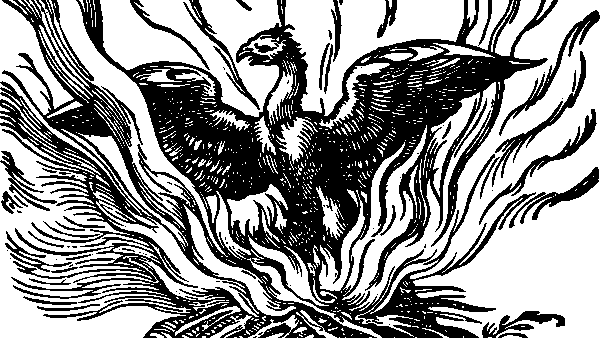What happens when one man tries to dream another into existence? Jorge Luis Borges imagines this scenario in this thought-provoking story.
The opening quote from Through the Looking-Glass hints at the theme of this story:
“And if he left off dreaming about you … ?”
We meet a “taciturn man” slipping unseen from a boat into the “sacred mud” in the “unanimous night”, knowing nothing about him except that he comes from “one of those infinite villages” on the “violent flank” of the mountain.
The use of so many adjective-noun combinations in the opening sentence is unusually repetitive for a careful prose stylist like Jorge Luis Borges, so it draws attention to those phrases and makes us notice some details that will be relevant later.
The man quickly finds his way to the circular ruins of the story’s title, but the circularity doesn’t end there. In fact, the whole story is circular. He uses the seclusion of the ruined temple to pursue his goal of dreaming another man into existence. He spends years on the task, becoming an accomplished sorcerer and eventually imagining a young man in such infinitesimal detail that he comes to life.
But the sorcerer is soon discomfited by the news of a man at a temple in the north who can walk on fire without being harmed. He fears that the youth he has created, his “son”, will realise that he can’t be harmed by things like fire and so will understand that he is not real.
“He feared that his son would meditate upon his unnatural privilege and somehow discover that he was a mere simulacrum. To be not a man, but the projection of another man’s dream—what incomparable humiliation, what vertigo!”
When a fire comes to the ruined temple, however, it is the sorcerer himself who is unharmed.
“With relief, with humiliation, with terror, he realized that he, too, was but appearance, that another man was dreaming him.”
And so the circle is complete. We realise that the whole story is being repeated elsewhere—perhaps at that other temple in the north, where the man was unharmed by fire. But that would mean that he is also not real, so somebody else is dreaming him. Where does it all end? The circular stories could spiral on infinitely through time and space.
The Circular Ruins extends the exploration of subjective idealist philosophy from previous stories such as Tlön, Uqbar, Orbis Tertius. If objects exist only by virtue of being perceived, then what of people? Does our existence, too, depend on being perceived or imagined by another? And what would it feel like if we became aware of this other person dreaming us into existence?
This is one of those Borges stories that ends on a dizzying note, with a simple, laconic sentence opening up huge new possibilities that set your mind wandering. So much of the story is about the sorcerer’s determined project to dream someone into existence, and the ending makes us re-evaluate the whole thing. I found it fascinating and thought-provoking.
This post is part of my Borges Marathon, a slow reading of all of the short fictions of Jorge Luis Borges. Please leave your own comments below and check out some of the other posts in the series.




There are 2 comments
Mmmm, this sounds most satisfying, the link between theme and structure. (I’ve read it, but so long ago I no longer remember.)
And look at you, still ambling along with your project…in case we’d thought you’d forgotten.
Loved this story.